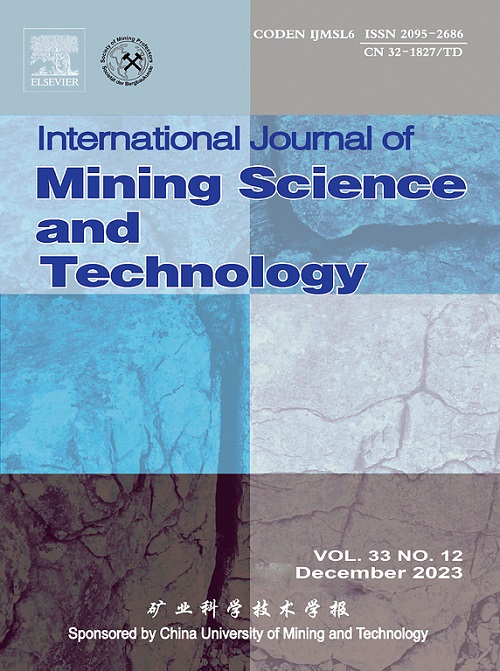基于机器学习的浮选回收率集成预测建模
IF 11.7
1区 工程技术
Q1 MINING & MINERAL PROCESSING
International Journal of Mining Science and Technology
Pub Date : 2024-12-01
DOI:10.1016/j.ijmst.2024.11.012
引用次数: 0
摘要
随着人工智能在选矿领域的兴起,浮选指标的预测已成为研究热点。然而,目前的预测模型存在精度低、预测误差大的问题。因此,本文采用两步法。首先,采用框图法和滤波算法对异常点进行处理。然后,采用决策树(DT)、支持向量回归(SVR)、随机森林(RF)以及套袋、提升和堆叠积分算法构建浮选回收率预测模型。通过大量实验比较了6种建模方法对浮选回收率的预测精度,探讨了不同基模型组合对叠加模型预测精度的影响。现场数据验证了该模型的有效性。研究表明,采用10个变量的叠加系综方法预测浮选回收率的预测效果优于套袋系综方法和单一模型,MAE、RMSE、R2和MRE得分分别为0.929、1.370、0.843和1.229%。在±2%和±4%的误差范围内,准确率分别为82.4%和94.6%。因此,预测效果相对精确,在实际生产中具有重要价值。本文章由计算机程序翻译,如有差异,请以英文原文为准。
Ensemble prediction modeling of flotation recovery based on machine learning
With the rise of artificial intelligence (AI) in mineral processing, predicting the flotation indexes has attracted significant research attention. Nevertheless, current prediction models suffer from low accuracy and high prediction errors. Therefore, this paper utilizes a two-step procedure. First, the outliers are processed using the box chart method and filtering algorithm. Then, the decision tree (DT), support vector regression (SVR), random forest (RF), and the bagging, boosting, and stacking integration algorithms are employed to construct a flotation recovery prediction model. Extensive experiments compared the prediction accuracy of six modeling methods on flotation recovery and delved into the impact of diverse base model combinations on the stacking model’s prediction accuracy. In addition, field data have verified the model’s effectiveness. This study demonstrates that the stacking ensemble approaches, which uses ten variables to predict flotation recovery, yields a more favorable prediction effect than the bagging ensemble approach and single models, achieving MAE, RMSE, R2, and MRE scores of 0.929, 1.370, 0.843, and 1.229%, respectively. The hit rates, within an error range of ±2% and ±4%, are 82.4% and 94.6%. Consequently, the prediction effect is relatively precise and offers significant value in the context of actual production.
求助全文
通过发布文献求助,成功后即可免费获取论文全文。
去求助
来源期刊

International Journal of Mining Science and Technology
Earth and Planetary Sciences-Geotechnical Engineering and Engineering Geology
CiteScore
19.10
自引率
11.90%
发文量
2541
审稿时长
44 days
期刊介绍:
The International Journal of Mining Science and Technology, founded in 1990 as the Journal of China University of Mining and Technology, is a monthly English-language journal. It publishes original research papers and high-quality reviews that explore the latest advancements in theories, methodologies, and applications within the realm of mining sciences and technologies. The journal serves as an international exchange forum for readers and authors worldwide involved in mining sciences and technologies. All papers undergo a peer-review process and meticulous editing by specialists and authorities, with the entire submission-to-publication process conducted electronically.
 求助内容:
求助内容: 应助结果提醒方式:
应助结果提醒方式:


